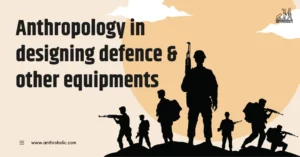AI Answer Evaluation Platform Live Now. Try Free Answer Evaluation Now
Living Major Primates
The study of living major primates, a distinct and diverse group of mammals that includes humans, non-human apes, monkeys, and prosimians, provides a deep and comprehensive perspective on evolutionary biology, anthropology, and conservation ecology [1].

Understanding Primates: An Evolutionary Perspective
Primates, with their remarkable adaptability and complex social structures, represent a crucial piece of the evolutionary puzzle [2]. Their diverse lifestyles, from the solitary nocturnal prosimians to the highly social diurnal humans, mirror the extensive evolutionary modifications in response to various ecological pressures.
| Group | Subgroup | Key Characteristics | Example Species | Distribution |
| Prosimians | Lemurs, Lorises, Bushbabies | Small, often nocturnal, rely on olfaction, simpler brain structure | Ring-tailed lemur, Slow loris, Galago | Mostly Madagascar (Lemurs), Africa and Asia (Lorises and Bushbabies) |
| Monkeys | New World Monkeys, Old World Monkeys | Diurnal, more complex social structures, some have prehensile tails (New World) | Spider monkey (New World), Baboon (Old World) | Americas (New World), Africa and Asia (Old World) |
| Apes | Gibbons, Orangutans, Gorillas, Chimpanzees, Bonobos | Larger, tailless, highly social, complex behaviors, use of tools | Gibbon, Orangutan, Gorilla, Chimpanzee, Bonobo | Southeast Asia (Gibbons and Orangutans), Africa (Gorillas, Chimpanzees, and Bonobos) |
| Humans | Homo Sapiens | Bipedal, advanced cognitive abilities, complex cultural practices | Human | Global |
Comparative Anatomy: Differences among Major Primates
| Primate Group | Diet | Locomotion | Vision | Dentition | Social Structure |
| Prosimians | Insects, fruit, small animals | Arboreal quadrupedalism, leaping | Relatively good, nocturnal species have large eyes for low-light vision | Sharp, pointed teeth for capturing small prey, dental comb for grooming | Mostly solitary or small family groups |
| New World Monkeys | Fruit, leaves, insects, small vertebrates | Arboreal quadrupedalism, prehensile tail for additional support | Color vision varies, some have stereoscopic vision | Flat, broad molars for grinding plant matter | Varies from small family units to large multi-male, multi-female groups |
| Old World Monkeys | Fruit, leaves, seeds, insects, small vertebrates | Arboreal and terrestrial quadrupedalism | Full color vision, good depth perception | Flat, broad molars for grinding plant matter, sharp canines for defense and competition | Mostly multi-male, multi-female groups |
| Apes (excluding humans) | Fruit, leaves, insects, meat (chimpanzees) | Brachiation, knuckle-walking (gorillas, chimpanzees), bipedalism (bonobos during certain activities) | Full color vision, good depth perception | Large canines (males), heavy molars for tough plant matter | Varies – gibbons are monogamous, orangutans are solitary, gorillas live in harems (one male, multiple females), and chimpanzees live in multi-male, multi-female groups |
| Humans | Omnivorous diet | Bipedalism | Full color vision, good depth perception | Reduced canines, broad molars for varied diet | Highly social, complex societies |
Primate Behavior and Social Structure
Social Organization: Solitary, Pair-living, and Group-living Primates
Primates exhibit a range of social structures, from solitary living (like orangutans), monogamous pair-living (such as gibbons), to complex group living seen in baboons and humans. These social structures have evolved in response to various ecological pressures, such as predation, resource availability, and reproductive strategies.
Communication and Vocalizations
Primates use a wide array of communication forms, including vocal, visual, tactile, and chemical signals. Vocalizations in primates are diverse, serving numerous functions like warning about predators (alarm calls), maintaining group cohesion, and signaling social status or reproductive availability.
Reproduction and Parenting Strategies
Primate reproductive strategies are quite varied. Some primates, like gibbons, are monogamous. In contrast, others, like baboons and humans, exhibit a wide range of mating behaviors. Parental care is generally high among primates, with prolonged periods of offspring dependency, but the level of paternal involvement varies among species.
Dominance Hierarchies and Conflict Resolution
Dominance hierarchies, often maintained through agonistic behaviors, are a common feature among many primate species. Conflict resolution strategies can include reconciliation behaviors, such as grooming and other affiliative interactions. In more complex societies, like those of chimpanzees and humans, alliances, politics, and social manipulation can play significant roles.
Primates and Anthropology
Primate Studies and Human Evolution
The study of non-human primates offers critical insights into human evolution. Comparative studies between human and non-human primates can shed light on the evolutionary processes and adaptations leading to the emergence of human characteristics. For example, the study of bonobos and chimpanzees has provided us with valuable insights into early hominid social structure and behavior.
Cultural Behavior in Non-Human Primates
Culture, once thought to be a uniquely human trait, is now recognized in several primate species. Instances of tool use, foraging techniques, and social behaviors that vary across different populations suggest cultural transmission of behaviors, particularly in apes.
Primatology in the Anthropological Perspective
Primatology, the study of non-human primates, is an integral part of anthropology. It informs our understanding of human evolution, human behavior, and the conservation of our closest living relatives. It provides a comparative framework to better understand the biological and cultural aspects of being human.
Case Studies
It is essential to delve into specific case studies of major primate species for a nuanced understanding.
Ring-Tailed Lemurs (Lemur catta)
Ring-tailed Lemurs are one of the most recognized species of lemurs, largely due to their long, black and white ringed tail. They live in the forests of Madagascar, an island known for its high biodiversity and endemism. These lemurs are social animals, living in groups dominated by females. They are omnivorous, feeding mainly on fruits, leaves, and occasional invertebrates. Ring-tailed lemurs are known for their ‘sunbathing’ behavior, where they sit upright facing the sun, an example of behavioral thermoregulation.
Capuchin Monkeys (Cebus capucinus)
Capuchin monkeys are native to Central and South America. They are recognized for their high intelligence and dexterity, often demonstrated in their use of tools to access food, such as using rocks to crack open nuts. Capuchins are also highly social, living in large groups with a complex hierarchy. Their diet is omnivorous, consuming fruits, nuts, seeds, insects, and even small vertebrates.
Baboons (Genus Papio)
Baboons are a group of five species that live in various habitats throughout Africa and the Arabian Peninsula. They have a highly adaptable diet, consuming a wide range of plants and animals. Baboon societies are complex, multi-male, multi-female groups with strict dominance hierarchies. They exhibit rich social behaviors, including alliance formation, reconciliation, and even deception.
Orangutans (Genus Pongo)
Orangutans, found in the rainforests of Borneo and Sumatra, are the world’s largest arboreal mammals. They are known for their solitary nature, with males and females generally coming together only to mate. Orangutans are highly intelligent, exhibiting advanced problem-solving abilities and cultural behaviors, such as tool use. They primarily eat fruits, especially durians and figs, supplemented with leaves, bark, and insects.
Humans (Homo sapiens)
Humans are the most widespread of primates, inhabiting every continent on Earth. They are known for their highly advanced cognitive abilities, complex language, and cultural practices. Human society is diverse, with a multitude of social, political, and familial structures. Humans are omnivorous, consuming a wide range of foods. They are the only primates to have fully developed bipedal locomotion and the capacity for creating and using sophisticated tools and technology.
Tertiary and Quaternary Fossil Primates
Tertiary and Quaternary periods hold significant information about the evolution of primates, including humans. The Tertiary period (66-2.6 million years ago), divided into five epochs (Paleocene, Eocene, Oligocene, Miocene, and Pliocene), saw the emergence and diversification of the first primates. The Quaternary period (2.6 million years ago – present) includes the Pleistocene and Holocene epochs, marking the evolution of early hominids and Homo sapiens.
Tertiary Period
| Epoch | Timeline (Million Years Ago) | Fossil Primate | Description |
| Paleocene | 66-56 | Plesiadapiforms | Primate-like mammals living concurrently with earliest primates, crucial for understanding primate origins |
| Eocene | 56-33.9 | Adapids and Omomyids | First true primates; Adapids are early prosimians possibly related to lemurs and lorises, while Omomyids may be related to tarsiers |
| Oligocene | 33.9-23 | Aegyptopithecus | Represents the emergence of the first anthropoids and the beginning of the divergence between Old World monkeys and apes |
| Miocene | 23-5.3 | Proconsul and Sivapithecus | The diversification of apes (Hominoidea); Proconsul is a potential ancestor of both great apes and humans, while Sivapithecus may be an ancestor to orangutans |
| Pliocene | 5.3-2.6 | Australopithecus | The emergence of early hominins which set the stage for the evolution of the human lineage |
Quaternary Period
| Epoch | Timeline | Fossil Primate | Description |
| Pleistocene | 2.6 Million – 11,700 Years Ago | Homo habilis, Homo erectus, Homo heidelbergensis, Homo neanderthalensis, Homo sapiens | Marked the emergence and diversification of the genus Homo; a period of significant hominin evolution, with developments in complex tool use, control of fire, and symbolic behavior. |
| Holocene | 11,700 Years Ago – Present | Homo sapiens | The continued evolution of Homo sapiens leading to all modern human populations; marked by the rise of agriculture, complex societies, written language, and technology. |
Conclusion
In conclusion, studying the biological, behavioral, and cultural aspects of our closest living relatives, the primates, can shed significant light on understanding the human species. From the solitary lemurs in Madagascar’s forests to the highly social humans spread across the globe, the study of primates is fundamentally a study of adaptation, diversity, and, essentially, what it means to be a primate.
References
[1] Goodman, M., Porter, C. A., Czelusniak, J., Page, S. L., Schneider, H., Shoshani, J., Gunnell, G., & Groves, C. P. (1998). Toward a phylogenetic classification of Primates based on DNA evidence complemented by fossil evidence. Molecular Phylogenetics and Evolution, 9(3), 585-598. https://pubmed.ncbi.nlm.nih.gov/9668008/
[2] Fleagle, J.G. (2013). Primate Adaptation and Evolution. Academic Press.




